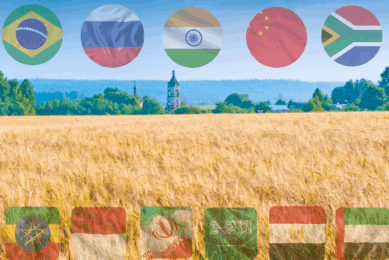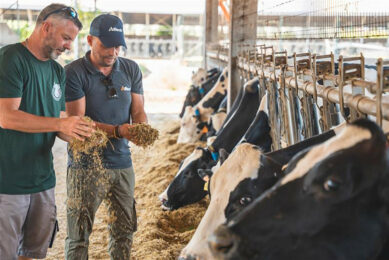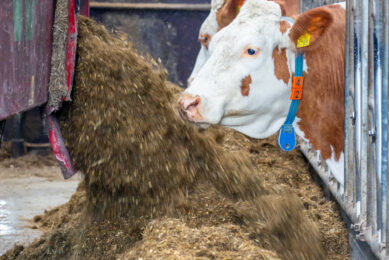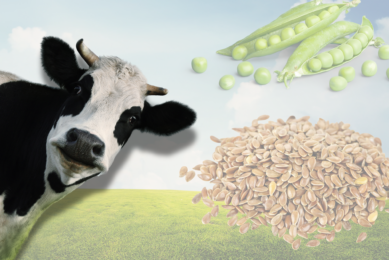5 top tips to avoid drop in milk quality at turnout
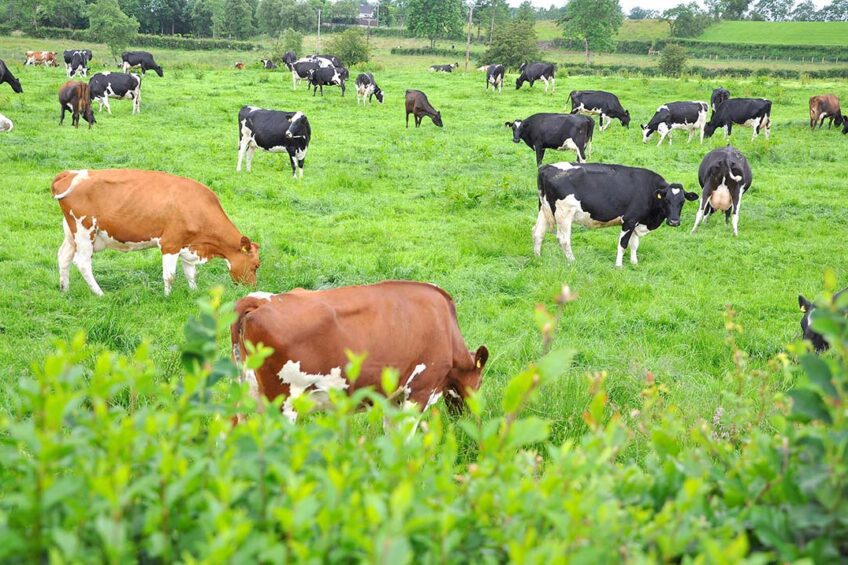
As dairy farmers prepare to turn their cows out to lush spring grass, they should keep a close eye on milk quality and adjust diets if required.
Following the winter housing feeding cost burden, dairy farmers look forward to reducing feed bills when the cows enter the grazing period.
Grass is the cheapest form of feed for dairy cows but it can be quite a nutritional challenge to maintain milk quality, which is the key factor that influences the milk price. With good management of the grazing pastures, dairy farmers aim to get their cows out as soon as possible to maximise milk production from forage. The goal is to then keep them outdoors grazing for as long as possible to keep feed costs down, but also making sure to monitor milk quality.
Spring grass is highly digestible for cows, but has low structural fibre, high crude protein levels and variable levels of dry matter, which can pose challenges.
Top tips for managing milk quality at turnout
![]() Allow ample time to move cows outdoors to spring grazing; 2-3 weeks will give time for the rumen microbes to adjust from the housed diet, as well as giving ground conditions more time to improve, especially following wet weather.
Allow ample time to move cows outdoors to spring grazing; 2-3 weeks will give time for the rumen microbes to adjust from the housed diet, as well as giving ground conditions more time to improve, especially following wet weather.
Just a few hours of grazing per day when weather conditions allow allows the rumen bugs time to adapt to fresh grass.
Protein levels of spring grass, in the form of rumen degradable protein (RDP), is around 25%. Rumen microbes may have problems utilising this protein, particularly if there isn’t enough fermentable energy available. This RDP is broken down to ammonia in the rumen, passes through the rumen wall into the blood stream and is converted to urea in the liver. This, in turn, can have a negative impact on milk production, cow fertility and foot health.
![]() Maximising the proportion of quality grass in the diet of the dairy cow throughout the season will boost milk protein levels. Optimal grassland management involves balancing the supply of quality grass for grazing with the grazing demand throughout the season. Measuring the grass covers on the farm and maintaining a grass wedge throughout the season will help to ensure each grazing is as close to the optimal pre-grazing cover of 3,000 kg DM/ha as possible.
Maximising the proportion of quality grass in the diet of the dairy cow throughout the season will boost milk protein levels. Optimal grassland management involves balancing the supply of quality grass for grazing with the grazing demand throughout the season. Measuring the grass covers on the farm and maintaining a grass wedge throughout the season will help to ensure each grazing is as close to the optimal pre-grazing cover of 3,000 kg DM/ha as possible.
It is particularly important to focus on grazing management in the spring, as this will determine the quality of the grass later in the season in subsequent grazing rotations.
Studies at the College of Agriculture, Food and Rural Enterprise (CAFRE) in Northern Ireland looking at milk protein production have found there was a decrease in milk protein later in the season from swards grazed laxly in the spring versus swards grazed tightly in the spring. However, a balance must be found as if cows are grazing too tightly in the spring it will decrease intakes and hence milk protein production.
The seasonal growth curve of grass and the weather make maintaining quality grass for grazing throughout the season a continual challenge. There are many tools available to manage grass surpluses and deficits, including altering stocking levels, altering the grazing area, fertiliser applications, removal and baling of surplus grass, supplement inclusion, on-off grazing etc.
CAFRE research also demonstrated that milk protein content can be increased by extending the grazing season, allowing cows to graze in the early spring and late autumn.
At the Greenmount campus farm, the grazing season usually starts in mid March and extends to mid November, depending on weather conditions and grass cover. Planning the final rotation length and paddock closing schedule is critical in preparing a grazing wedge for early turnout in the following grazing season.
Maintaining a minimum ryegrass content of 60-70% across the grazing swards is important to be able to grow grass early in the season and maintain grass yields throughout the season. Swards with higher ryegrass contents will increase energy intake and milk protein production due to the increased digestibility of the ryegrass varieties compared with non-sown species.
![]() Watch out for SARA. Although predominantly affecting winter housed cows, farmers should also be vigilant for Sub-acute Rumen Acidosis (SARA) in cows turned out to grass. Spring sunshine raises sugars alongside leafy green plants that don’t have much fibre, which can challenge rumen function, and lead to the disease.
Watch out for SARA. Although predominantly affecting winter housed cows, farmers should also be vigilant for Sub-acute Rumen Acidosis (SARA) in cows turned out to grass. Spring sunshine raises sugars alongside leafy green plants that don’t have much fibre, which can challenge rumen function, and lead to the disease.
SARA can reduce milk production by up to 3 litres per cow per day and lower the protein and butterfat content. To help avoid SARA, farmers should continue buffer feeding cows outdoors to allow rapidly fermented carbohydrates to be balanced and to ensure cows have access to sufficient physical fibre.
Diets also need to contain sufficient supplies of glucose to fuel the liver to increase lactose production which, in turn, drives milk yield. A failure to do this can result in excessive mobilisation of body condition which can have a negative impact on fertility.
![]() Watch out for milk fever symptoms. Freshly turned out cows are also in danger of contracting milk fever, otherwise known as grass staggers, which can also hurt milk production and quality. Cows face milk fever when their systems are low in magnesium, a substance that they cannot store and therefore must receive adequate amounts on a daily basis.
Watch out for milk fever symptoms. Freshly turned out cows are also in danger of contracting milk fever, otherwise known as grass staggers, which can also hurt milk production and quality. Cows face milk fever when their systems are low in magnesium, a substance that they cannot store and therefore must receive adequate amounts on a daily basis.
Grazed grass, particularly early spring grass, is low in magnesium meaning cows are at higher risk during this period. Feeding mineral supplements is a good method of trying to counteract the problem.
![]() Milk recording is important. Milk recording supplies farmers with a host of data about each individual cow’s performance and milk quality. If a cow is having some problems this will be reflected in her milk production and quality trends.
Milk recording is important. Milk recording supplies farmers with a host of data about each individual cow’s performance and milk quality. If a cow is having some problems this will be reflected in her milk production and quality trends.
It is a complete management tool that allows farmers and vet to make informed decisions about cows that need attention. Production figures as well as butterfat, protein, urea, ketosis, acidosis and cell counts are produced.
Join 13,000+ subscribers
Subscribe to our newsletter to stay updated about all the need-to-know content in the dairy sector, two times a week.



